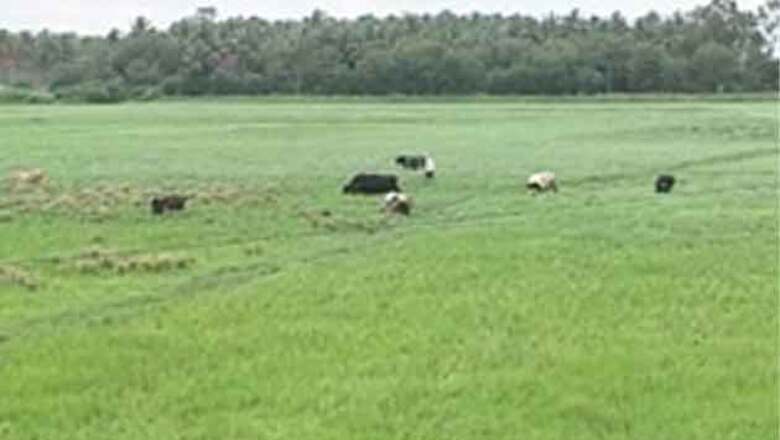
views
New Delhi: The monsoons in India herald good news as well as bad. India's Agriculture Secretary has said that with excessive rain, while there are reports of floods, there's also an expectation of bumper crop production.
Water levels have gone beyond the 10-year average and increased soil moisture. India, the world's second-largest rice grower, may reap a bumper harvest of 100 million metric tons in 2010-11. It is also likely to produce a record pulse crop of 16.5 million tons this year.
Higher output of food grains, oilseeds and other crops would ease food inflation, which rose to multi-year highs after last year's drought. India is set to introduce food security bill in the winter session, which will make ‘35 kg rice and wheat’ a legal right to people below poverty line. The National Advisory council will take a decision on September 24.
While this is very good news for the people, the immediate worry remains where to store the grains.
A ‘Wall Street Journal’ report showed that India may reap a bumper winter-sown crop including wheat and oil seeds this crop year as heavy monsoon rains have raised water reservoir levels beyond the 10-year average and increased soil moisture. The magazine quoted Agriculture Secretary PK Basu making this prediction on Tuesday.
Water reservoir levels are 136% more than a year ago and have touched 102% of the 10-year average, Mr. Basu told Dow Jones Newswires.
"With good rains, fresh water comes up and saline water goes down. It's very good for soil and crop health. So rabi (winter-sown) crops will be benefited," Mr. Basu said.
The rains couldn't have come at a better time as the country's farmlands were parched after the worst drought in nearly four decades in 2009. High water reservoir levels particularly help winter-sown crops as seasonal monsoon rains usually end in September.
Higher output of food grains, oil seeds and other crops would ease food inflation, which rose to multi-year highs after last year's drought.
Adequate rains in the northern grain-bowl regions of Punjab and Haryana will likely offset the impact of dry spells in the three rice-growing eastern states of West Bengal, Bihar and Jharkhand, Mr. Basu said.
India, the world's second-largest rice grower, may reap a bumper harvest of 100 million metric tons in 2010-11, up 10% from a year earlier thanks to more plantings in productive regions and better adoption of high-yielding seeds.
The country will likely produce a record pulses crop of 16.5 million tons in 2010-11 because areas under the protein-rich staple have risen due to high state-fixed prices and government incentives, Mr. Basu said. India is the world's largest consumer of pulses, and higher output will help it reduce imports from around 3 million tons a year.
Summer rice planting until Sept. 2 rose 6.6% to 31.87 million hectares thanks to normal monsoon rains, official data showed. Rice is primarily a summer-sown crop, but it is also grown in winter.
The area under pulses cultivation increased 21.4%. Sowing of summer crops in India usually starts in the last week of May and picks up with the arrival of monsoon rains in June.
Widespread showers in the past two to three weeks have brought India's monsoon rains up to the long-term average level, data from the weather office showed. From the start of the season on June 1 until Sept. 5, the country received 752.7 millimeters of rain, just higher than the 50-year average of 752.4 mm.
Water reservoir levels are 136% more than the year-ago levels and 102% higher compared with the ten-year average, Mr. Basu told Dow Jones Newswires.
"With good rains, fresh water comes up and saline water goes down. It's very good for soil and crop health. So rabi (winter-sown) crops will be benefited," Mr. Basu said.
The rains couldn't have come at a better time as the country's farmlands were parched after the worst drought in nearly four decades in 2009. High water reservoir levels particularly help winter-sown crops as seasonal monsoon rains end by September.




















Comments
0 comment